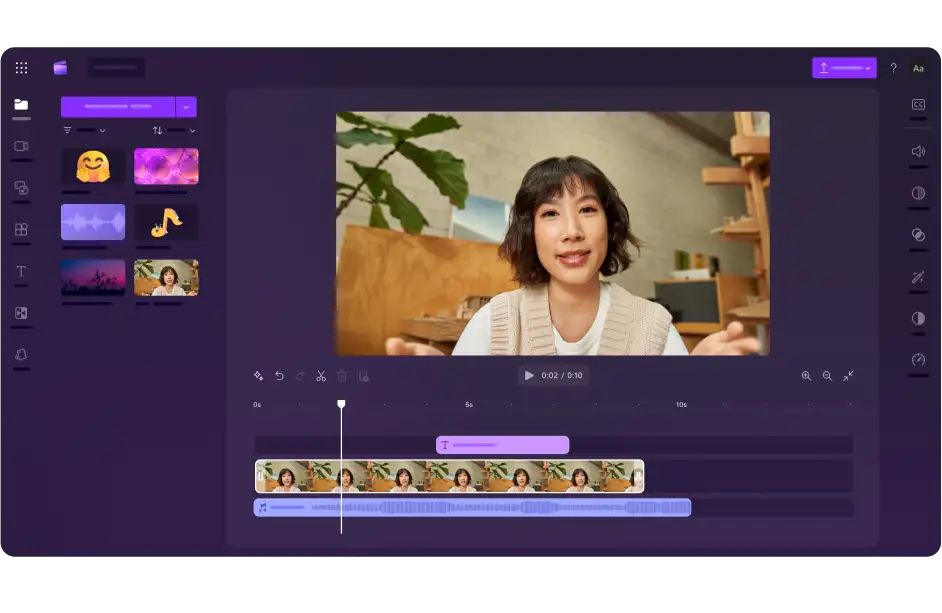Hızlı ve kolay video düzenleyicisi
Uzmanlık gerekmeden büyüleyici videolar oluşturmak için ihtiyacınız olan her şey.
Yapay zeka destekli düzenleme araçlarıyla zahmetsizce videolar oluşturun
Otomatik alt yazılar
80’den fazla dilde otomatik olarak doğru alt yazılar oluşturun. Konuşmayı metne dönüştürme teknolojimiz, videonuzdaki sesleri dakikalar içinde güvenli bir şekilde yazıya dökerek okunabilir alt yazılara dönüştürür.
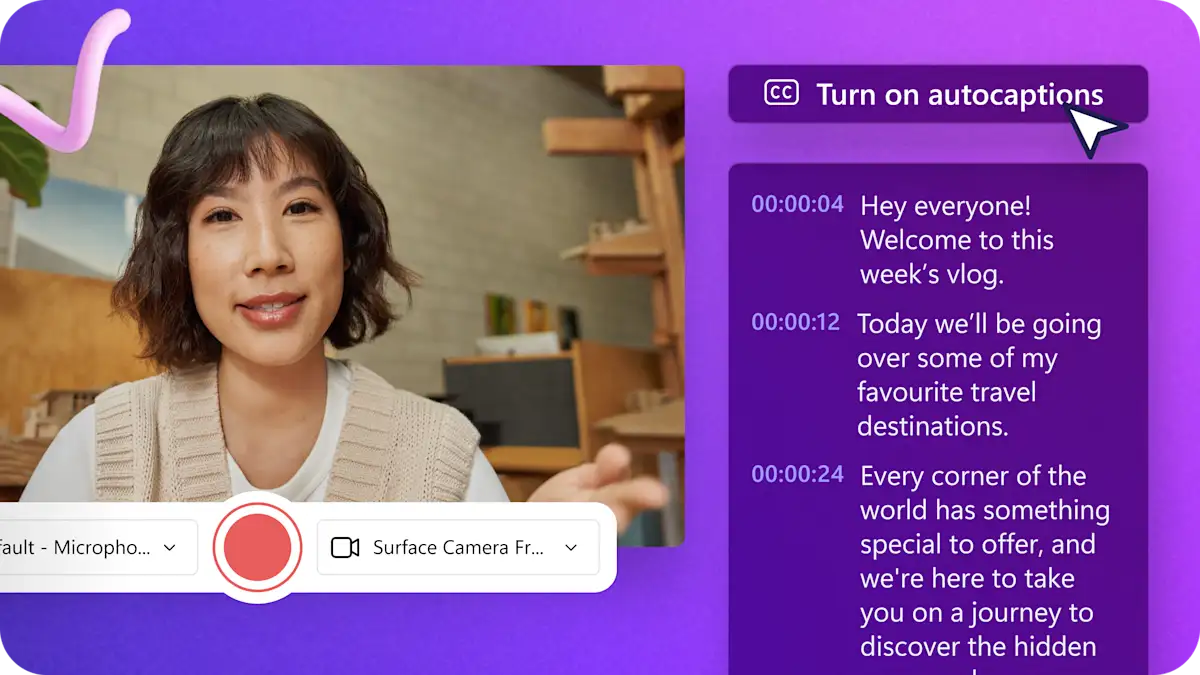
Metin okuma
Tek tıklamayla metni konuşmaya dönüştürün. Kulağa doğal gelen çok çeşitli sesleri doğru bir biçimde çoğaltmak için bir dil seçip sesi, tonu ve hızı değiştirin.
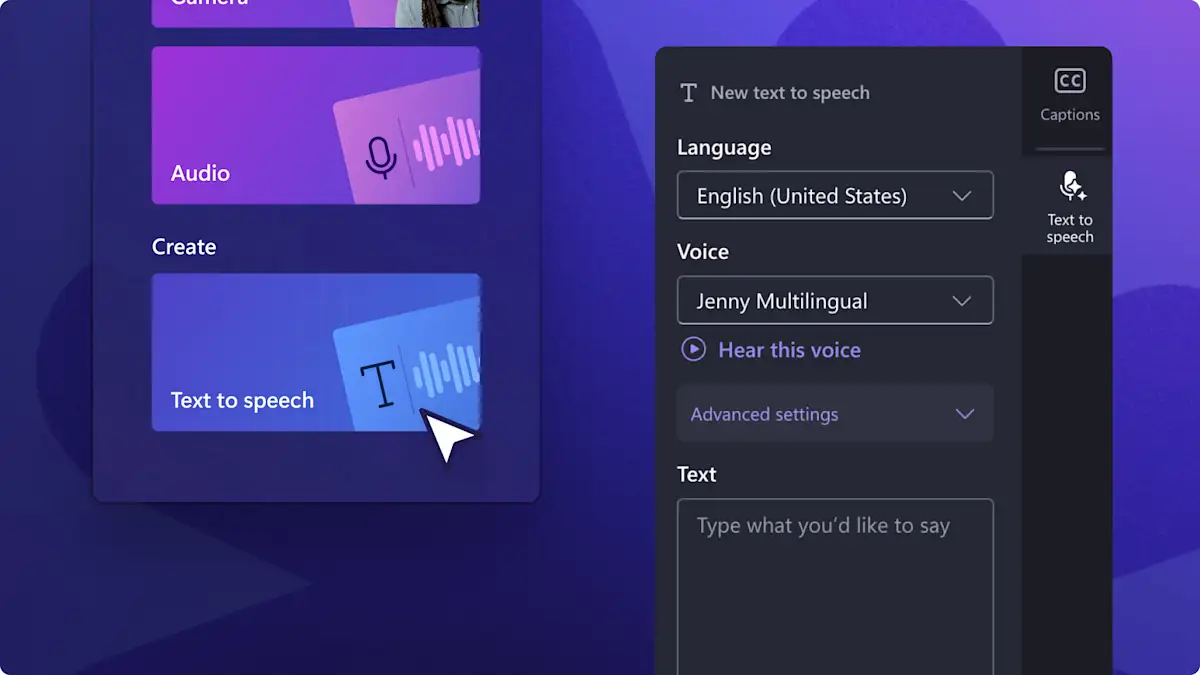
Videoları yeniden boyutlandırın
Videonun en boy oranını herhangi bir platforma uyacak şekilde değiştirin. Videonuzun etrafındaki boş alanları doldurmak için arka plan renkleri ve bulanıklaştırma efektleri ekleyin ya da görüntülerinizi ekranı tamamen dolduracak şekilde kırpın.

Gürültü engelleme
Gürültü engelleme ile sesteki arka plan gürültülerini kaldırın. Hareket halinde içerik oluştururken sokak, rüzgar ve ortam seslerini azaltarak içeriğinizin netliğini artırın.
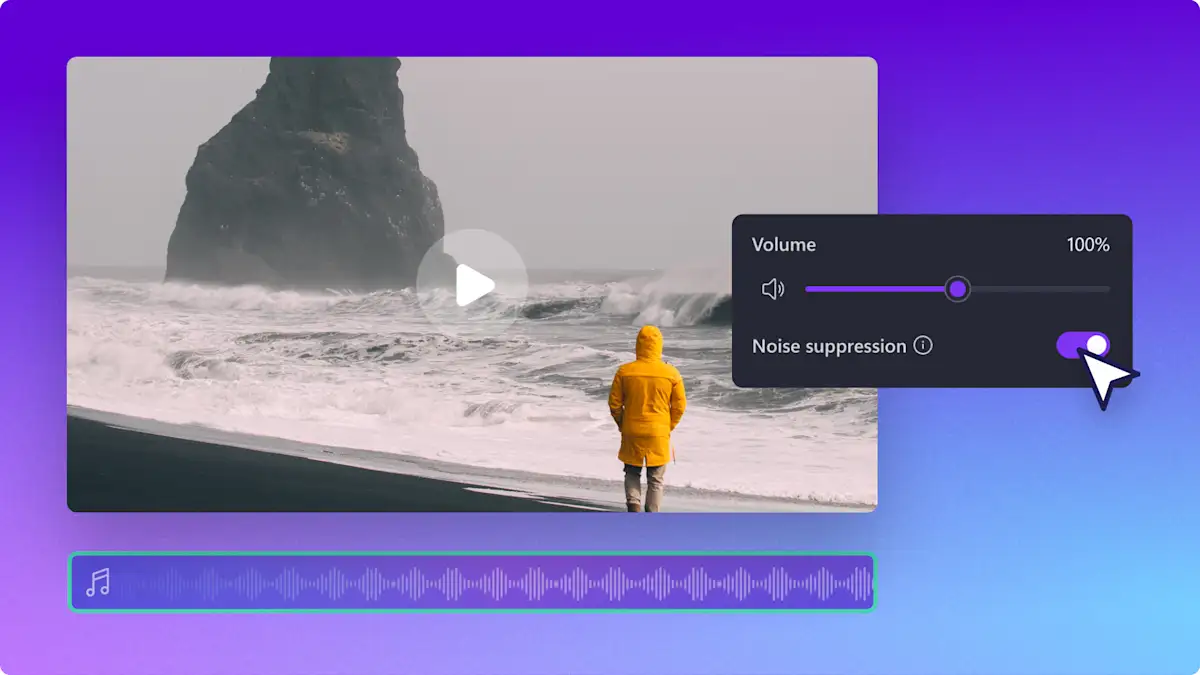
Otomatik kesme
Otomatik kesme ile daha hızlı düzenleyin.İlgi çekici podcast veya tanıtım videoları oluşturmak için web kamerası ve ses kayıtlarındaki sessizlikleri veya gereksiz kelimeleri kolayca bulun ve kaldırın.
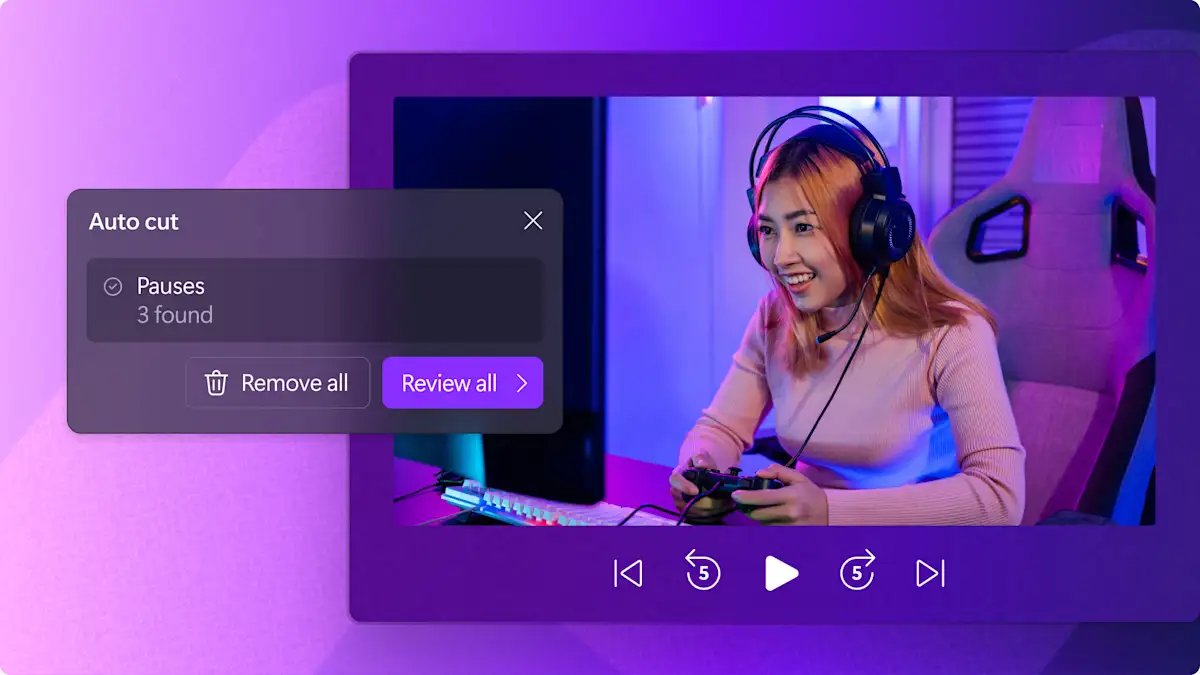
Telif hakkı olmayan öğelerle videonuzu dönüştürün
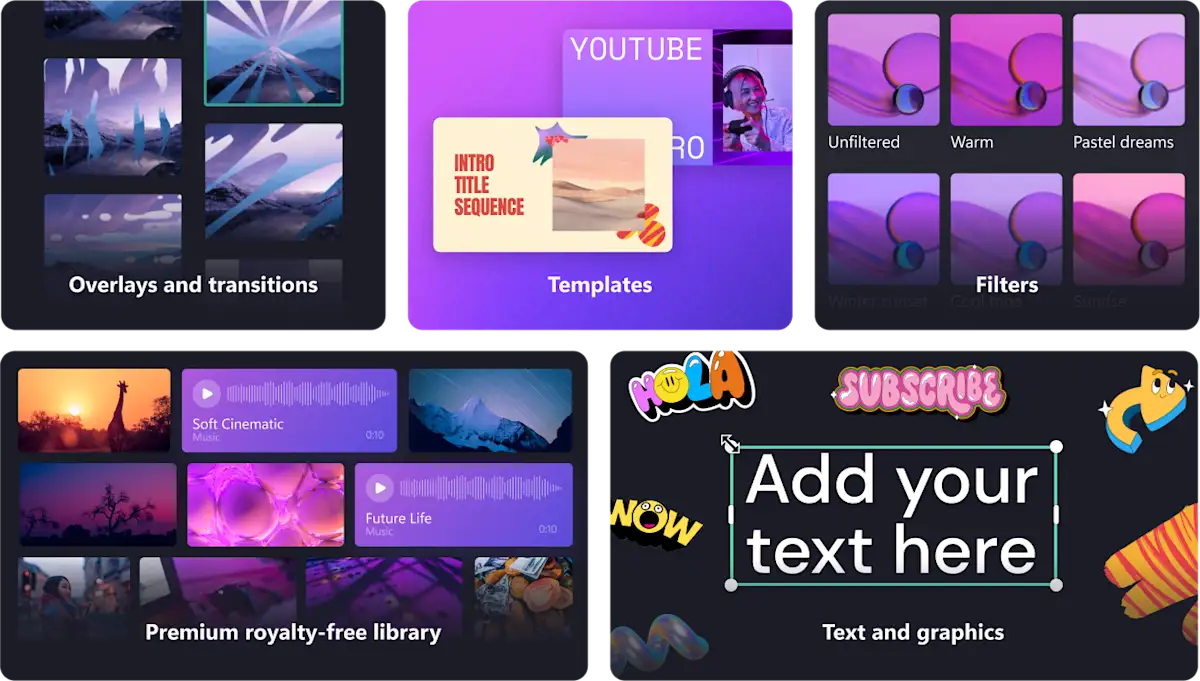
Filigran olmadan sınırsız video oluşturma
Clipchamp, ücretsiz olarak istediğiniz kadar yüksek çözünürlüklü (1080p) video oluşturmanıza olanak tanır. Bu sayede siz de en önemli şeye yani içeriklerinize odaklanabilirsiniz. İşletmeniz için veya yalnızca eğlence amaçlı videolar oluşturuyor olmanız fark etmeksizin, ücretsiz video oluşturucumuz bütçenizi aşmadan ilgi çekici içerikler oluşturmak için idealdir.

Gereken her şey, gerektiği anda
Tarayıcı içi video düzenleyicimiz güçlü bir bilgisayara veya pahalı bir yazılıma ihtiyaç duymadan videolarınıza kolayca erişmenizi ve bunları hemen düzenlemeye başlamanızı sağlar.
Clipchamp’i Windows 11’in Başlat menüsünde bulun veya Windows 10 için Microsoft Store’dan indirin. Premium özellikler Microsoft365 aboneliğiyle kullanılabilir.
Hareket halindeyken video oluşturun. Tek bir uygulamayı kullanarak videolarınızı kaydedin, düzenleyin ve alt yazı ekleyin.Clipchamp artık iOS cihazları için App Store’da kullanıma sunuldu.
Herkes için video düzenleme
Her gün bizi kullanan milyonlarca editöre katılın
Ücretsiz bir sürümde tüm bu özelliklerin olacağı aklıma gelmezdi.Ücretsiz, güzel özelliklere sahip ve kullanımı kolay bir video düzenleme sitesine sahip olmaktan ötürü şaşkın ve gerçekten minnettarım.Kullanıcı deneyiminin her anına bayıldım.Clipchamp, sosyal medya içeriklerim için kullandığım bir numaralı video düzenleme yazılımı.
Clipchamp’in kullanım kolaylığını seviyorum. Deneyimi ya da becerisi ne olursa olsun herkesin harika videolar oluşturmasına olanak veriyor. İster hevesli bir içerik üreticisi ister tecrübeli bir vlogger olun, Clipchamp tam size göre.
Clipchamp ile video oluşturmaya başlayın
